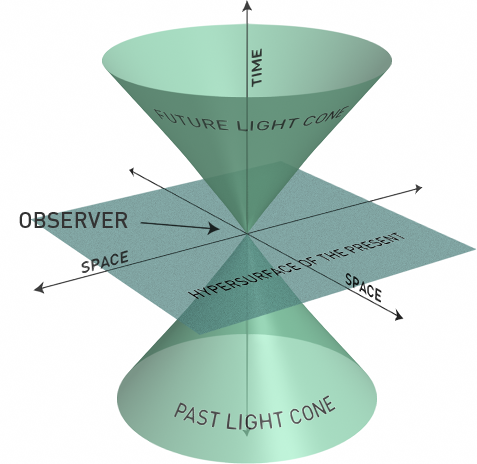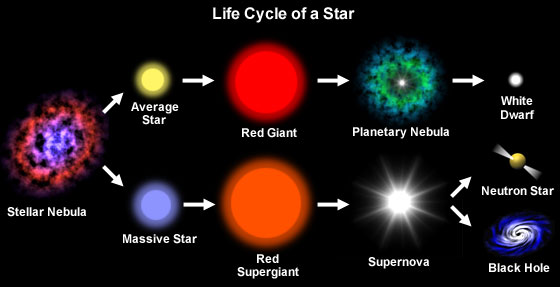In class we did as I said an activity in which we saw through a simulation how stellar black holes are formed. This is when a star falls on itself at the end of its life. This happens to suns much larger than ours when they stop being able to have enough energy to use fusion to keep from letting the gravity compress it and turn into a red giant then a supernova. See when it turns into a Red giant we learned that even though on the outside the appearance is greater than before that on the inside gravity starts to do its magic and starts compressing the core making it hotter and denser stopping gravity's force for a short while. The star has then nothing left to use for fusion so that its temperature rises crushing all the atoms left together.
the repulsive force that is happening between the nuclei is overcome by gravity so the core first compresses then falls back under pressure and a shock wave is processed. Material is heated and fusion makes new elements which get exploded out into space, these being the supernova. Not even the neutrons of the old star remain.
The black hole in the center of our galaxy is a super massive black hole. It is known as an area named Sagittarius A. Its radius is 6.25 light hours or a little less but it contains 3.7 million solar masses. Some evidence for this is center stars which seem to be orbiting around nothing. Which according to the rules of science cannot happen it has to be something large with a heavy gravitational pull. The object that they seem to be circling would be too small to contain that much of gravitational pull if it wasn't a black hole considering it itself is not pulled by anything. Also radio waves have been found projected/ released from that area.
http://www.nbcnews.com/id/46968468/ns/technology_and_science-space/t/scientists-closing-black-hole-center-milky-way/#.UZ84erWTh-0
http://scienceblogs.com/startswithabang/files/2012/05/Black_Hole_Milkyway.jpeg
Links:





No comments:
Post a Comment
Note: Only a member of this blog may post a comment.